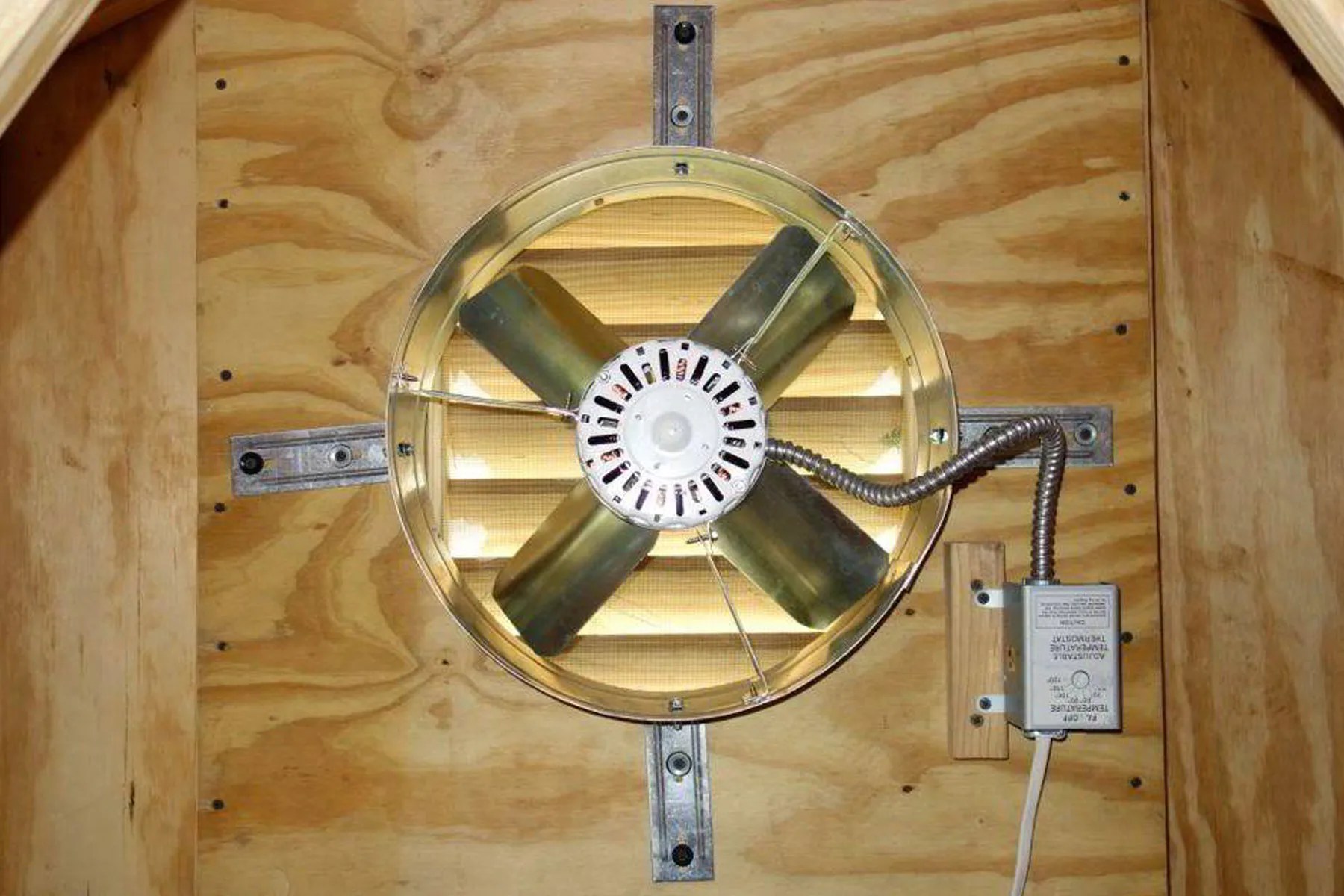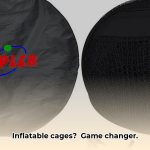Control Attic Heat & Humidity! A sweltering attic not only hikes up energy bills but also shortens your roof’s lifespan. An attic exhaust fan with a thermostat offers a smart solution for energy savings, improved comfort, and a healthier roof. This comprehensive guide dives into the different types of fans, crucial features to consider, and even walks you through a DIY gable-mounted installation. Ready to cool down your attic and your energy bills? Let’s get started!
Choosing the Right Attic Fan
An attic exhaust fan with a thermostat can dramatically improve your home’s comfort and energy efficiency. These devices regulate attic temperature, preventing summer overheating and winter moisture buildup, resulting in lower energy bills, a more comfortable living space, and a longer roof lifespan. Let’s explore the different types of attic fans available and the advantages of thermostat control for optimal cooling and ventilation.
Types of Attic Exhaust Fans
Understanding the various types of attic fans helps you choose the perfect fit for your home.
-
Gable-Mounted Fans: These are probably the most common type, installed on the gable end of your attic. Their simpler installation makes them a good DIY project, although they might not be suitable for all roof designs. They are typically more affordable than other options.
-
Roof-Mounted Fans: Installed directly on the roof, these fans tend to be more powerful than gable-mounted fans and are less visible from the ground. However, installation is more complex and often requires a professional. They also tend to be more expensive.
-
Solar-Powered Fans: Harnessing the sun’s energy, these fans offer an eco-friendly option, potentially reducing energy bills. However, their effectiveness may depend on sunlight availability, with some research suggesting limitations in consistently cloudy climates. They may not be as reliable as electric fans in all regions.
-
Smart/Wi-Fi Enabled Fans: These offer advanced control and monitoring via smartphone apps, allowing for scheduled operation and performance tracking. Some models include humidity sensors. This added convenience typically comes with a higher price tag.
-
Shutter Exhaust Fans: Shutter exhaust fans are designed with shutters that automatically open when the fan is running and close when it’s off. This feature helps prevent backdrafts, keeping unwanted air and pests out of your attic. They are available in both gable-mounted and roof-mounted configurations, offering flexibility for different installation needs.
-
Variable Speed Fans: These fans allow you to adjust the airflow based on your needs and the specific conditions in your attic. This adaptability helps optimize ventilation and energy consumption. They’re especially useful in climates with fluctuating temperatures or for homeowners who want more precise control over their attic environment.
Here’s a table comparing key features:
| Feature | Gable-Mounted | Roof-Mounted | Solar-Powered | Smart/Wi-Fi | Shutter Exhaust Fans | Variable Speed |
|---|---|---|---|---|---|---|
| Installation | Easier | More Difficult | Moderate | Moderate | Moderate to Difficult | Moderate |
| Visibility | More Visible | Less Visible | Less Visible | Less Visible | Varies | Varies |
| Power Source | Electric | Electric | Solar | Electric | Electric or Solar | Electric |
| Cost | Lower | Mid-range to High | Higher | Higher | Mid-range | Mid-Range |
| Airflow (CFM) | Variable | Higher | Variable | Variable | Varies | Adjustable |
Key Features to Consider
Choosing the right attic fan involves several key considerations:
-
CFM (Cubic Feet per Minute): CFM measures airflow. A higher CFM is generally better for larger attics, but might also increase noise levels. Use online calculators to determine the appropriate CFM for your attic’s size.
-
Thermostat Range: A wider thermostat range offers more control over activation and deactivation temperatures, allowing for customized temperature regulation.
-
Noise Level (Sones): A lower sone rating indicates quieter operation. Consider this if your attic is near living spaces.
-
Power Source: Electric fans offer reliable performance, while solar fans are eco-friendly but depend on sunlight. Hybrid models combine both power sources.
-
Shutter Type: Automatic shutters prevent backdrafts and improve efficiency by blocking unwanted airflow when the fan isn’t running.
-
Warranty: A longer warranty suggests higher quality and provides peace of mind.
DIY Gable-Mounted Fan Installation
This guide outlines the installation of a gable-mounted fan, generally the easiest type for DIYers. Disclaimer: Prioritize safety. If you are uncomfortable with electrical work or heights, consult a qualified professional. For safe and convenient attic access, consider upgrading to sturdy attic stairs or space-saving attic access ladders.
Step 1: Preparation
- Safety First: Turn off power to the attic’s electrical circuit at your main electrical panel. Double-check with a voltage tester.
- Gather Tools & Materials: Assemble necessary tools (drill, screwdriver, level, measuring tape, safety glasses, voltage tester) and materials (fan, mounting hardware, wiring connectors).
- Review Instructions: Carefully read the manufacturer’s instructions.
Step 2: Planning & Mounting
- Choose Location: Select a location on the gable end that provides good ventilation and is structurally sound.
- Mark & Mount Brackets: Use a level to mark bracket locations and securely attach them to the gable end.
Step 3: Wiring
- Connect Wiring: Carefully connect wires according to the wiring diagram and local electrical codes, ensuring proper insulation.
- Secure Connections: Use wire nuts and electrical tape to secure and insulate connections, preventing shorts.
Step 4: Fan Installation & Testing
- Install Fan: Attach the fan to the mounting brackets, ensuring it’s securely in place.
- Restore Power: Turn the power back on at the main panel.
- Test Operation: Verify proper fan operation and thermostat functionality, adjusting settings as needed.
Troubleshooting
- Fan Not Working: Double-check wiring connections and the circuit breaker. A tripped breaker is a common issue.
- Persistent Issues: Contact a qualified electrician if troubleshooting fails.
Professional Installation
While gable-mounted fans are often suitable for DIY installation, professional installation is recommended for roof-mounted fans or if you are not comfortable with electrical work or working at heights. Professionals ensure proper installation, compliance with building codes, and optimal performance.
Energy Savings & Comfort: The Benefits
Attic exhaust fans with thermostats offer several benefits:
- Reduced Cooling Costs: By expelling hot air, these fans reduce the strain on your AC, potentially lowering energy bills. The actual savings depend on factors like climate and existing insulation.
- Extended Roof Lifespan: Excessive heat damages roofing materials. Attic fans help regulate temperature, preventing premature wear.
- Improved Comfort: A cooler attic translates to a more comfortable living space, particularly in upstairs rooms.
However, there are also considerations:
- Upfront Cost: Purchasing and installing a fan requires an initial investment.
- Potential Energy Consumption (Electric Models): Electric fans consume energy, although this is often offset by reduced AC usage.
- Maintenance: Like any mechanical device, attic fans may require occasional maintenance.
The overall value depends on individual needs and circumstances. Research suggests attic fans are most effective when combined with proper insulation and ventilation strategies.
Attic Fans vs. Exhaust Fans: What’s the Difference?
All attic fans are exhaust fans, but not all exhaust fans are attic fans. Attic fans specifically ventilate attics, while “exhaust fan” is a broader term encompassing various fans that remove air from different areas, such as bathrooms or kitchens. Whole-house fans, which pull cool air in and exhaust warm air through the attic, are another type of exhaust fan, sometimes considered a type of attic fan due to their interaction with the attic space.
Setting the Right Temperature
The optimal activation temperature for your attic fan thermostat depends on several factors, including your climate, roof construction, and attic insulation. A common range is between 90°F and 110°F, preventing excessive heat buildup. Adjust this based on daily temperature forecasts and specific home characteristics. In colder climates, some homeowners use attic fans to control winter humidity, often using lower settings (around 75°F), although this is less common and requires careful consideration. Adding a humidistat set to around 50% relative humidity can further optimize attic moisture control.
Conclusion
An attic exhaust fan with a thermostat is a valuable investment for improving home comfort, energy efficiency, and roof health. By understanding the various fan types and features, you can choose the perfect fit for your needs. Whether you choose a DIY gable-mount installation or opt for professional installation, a cooler, more efficient attic is within reach.
- Burning Plastic Smell in House: Causes, Solutions, and Safety Measures - April 8, 2025
- Best Bug Killer for Yard: Effective Pest Control Guide (2024) - April 8, 2025
- Brown Recluse Spider Bites: Identification, Treatment, and Prevention - April 8, 2025










